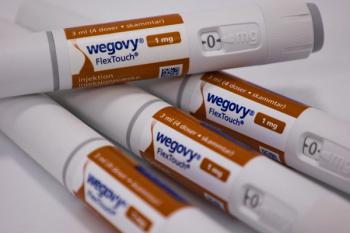
Extended Thromboprophylaxis With Rivaroxaban After Hospitalization Benefits Patients at Risk of VTE
Treating patients with rivaroxaban resulted in 32.5 fewer symptomatic venous thromboembolism (VTE) and VTE-related deaths among 10,000 patients.
Results from the Medically Ill Patient Assessment of Rivaroxaban Versus Placebo in Reducing Post-Discharge Venous Thrombo-Ebolism Risk (MARINER) study found that extending thromboprophylaxis with
An estimated 20 million acutely ill patients are hospitalized annually in the United States and the European Union, according to the study authors. Most of these patients have at least 1 risk factor for VTE, and without thromboprophylaxis, the incidence of hospital-associated VTE is approximately 10%. Current guidelines suggest in-hospital thromboprophylaxis for these patients but advise against routine anticoagulant thromboprophylaxis beyond the hospital stay, mostly due to concerns that the risk of bleeding outweighs the benefit for preventing VTE.
The MARINER study was a randomized, double-blind trial that compared thromboprophylaxis with rivaroxaban 10 mg daily versus placebo for 45 days after discharge from the hospital. Participants were medically ill patients with a creatinine clearance of 50 mL/min or more.
Rivaroxaban is an oral direct anticoagulant approved by the FDA for extended thromboprophylaxis after hospitalization based on the results of 2 phase 3 trials. Investigators quantified the benefit-risk balance in the MARINER study population by calculating the between-treatment rate differences in efficacy and safety end points per 10,000 patients treated.
Clinical characteristics of the study population were consistent with a hospitalized medical population at risk for VTE. The mean age was 67.8 years, 44.5% were women, and 96.5% were white. The most frequently reported admitting diagnosis was heart failure, followed by acute respiratory insufficiency or exacerbation of chronic obstructive pulmonary disease. The mean duration of hospitalization was 6.7 days and the mean duration of in-hospital thromboprophylaxis was 6.3 days.
Additionally, 52% of patients had baseline CrCl 80 mL/min or greater, and 47.9% had baseline CrCl 50 to less than 80 mL/min. Additionally, 68.7% of patients had D-dimer greater than 2 times the upper limit of normal, and 50.5% reported taking aspirin at baseline. Modified IMPROVE VTE risk scores of 2, 3, and 4 or greater were reported for 35.8%, 28.4%, and 35.8% of patients, respectively. A history of diabetes was present in 28.7% of patients and a history of cancer was reported in 8.4%.
According to the study, treating patients with rivaroxaban resulted in 32.5 fewer symptomatic VTE and VTE-related deaths among the 10,000 patients, but was associated with 8 additional major bleeding events. The benefit of the treatment was predominantly driven by the prevention of nonfatal symptomatic VTE and there was no between-treatment difference in the composite of critical site or fatal bleeding.
The investigators noted that the COVID-19 pandemic has complicated thromboprophylaxis strategies in acutely ill medical patients who are hospitalized with COVID-19. Recent research has suggested that a predictor of poor outcomes, including major thromboembolism and mortality in patients with COVID-19, is the development of a severe coagulopathy manifested among other markers by a marked elevation of D-dimer.
The recent Medically Ill Hospitalized Patients for COVID-19 Thrombosis Extended Prophylaxis With Rivaroxaban Therapy (MICHELLE) trial evaluated rivaroxaban 10 mg versus no anticoagulation for post-discharge thromboprophylaxis after hospitalization for COVID-19. According to the study results, the composite of major thromboembolism and cardiovascular death occurred in 5 (3%) of 159 patients assigned to rivaroxaban 10 mg daily and 15 (9%) of 159 patients not anticoagulated, with no major bleeding in either group.
The findings from the MARINER trial and other related trials of rivaroxaban could have clinical practice implications. Applying extended thromboprophylaxis among appropriately selected patients could reduce the population health burden of thromboembolic disease.
REFERENCE
Raskob G, Ageno W, Albert G, Elliott C.G., et al. Benefit-Risk Assessment of Rivaroxaban for Extended Thromboprophylaxis After Hospitalization for Medical Illness. Journal of the American Heart Association. October 7, 2022. Accessed October 11, 2022.
Newsletter
Stay informed on drug updates, treatment guidelines, and pharmacy practice trends—subscribe to Pharmacy Times for weekly clinical insights.














































































































































































































